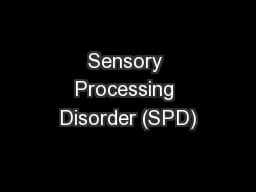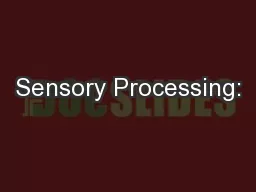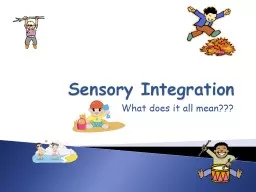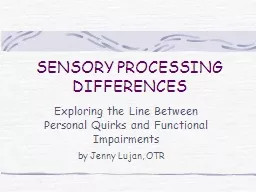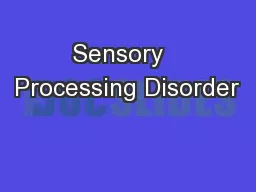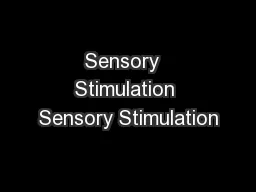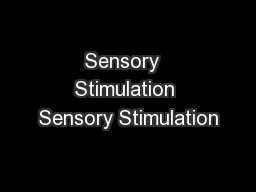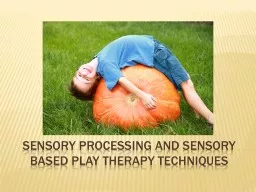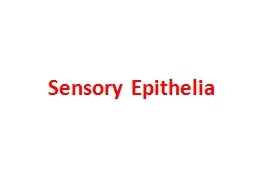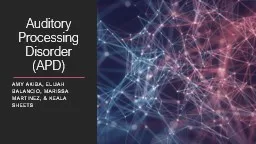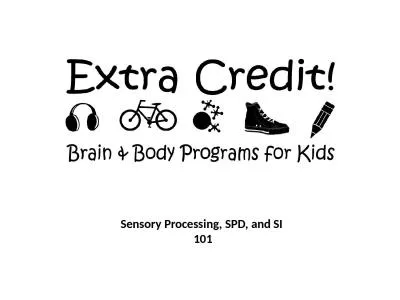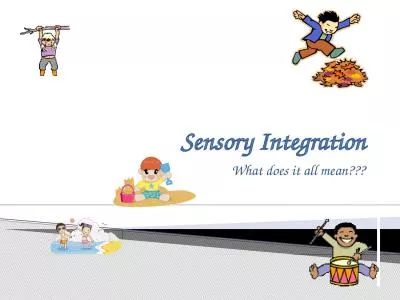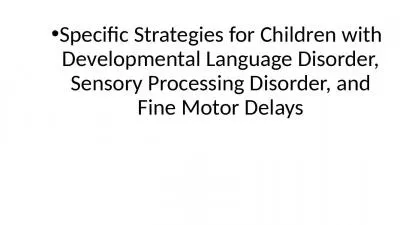PPT-Sensory Processing Disorder (SPD)
Author : pamella-moone | Published Date : 2016-06-11
By Alyssa Clements The Central Nervous System Visual Auditory Tactile touch Olfactory smell Gustatory taste Vestibular balance Proprioception body position A Typical
Presentation Embed Code
Download Presentation
Download Presentation The PPT/PDF document "Sensory Processing Disorder (SPD)" is the property of its rightful owner. Permission is granted to download and print the materials on this website for personal, non-commercial use only, and to display it on your personal computer provided you do not modify the materials and that you retain all copyright notices contained in the materials. By downloading content from our website, you accept the terms of this agreement.
Sensory Processing Disorder (SPD): Transcript
Download Rules Of Document
"Sensory Processing Disorder (SPD)"The content belongs to its owner. You may download and print it for personal use, without modification, and keep all copyright notices. By downloading, you agree to these terms.
Related Documents

